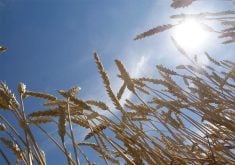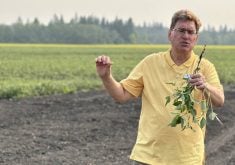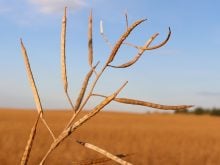Interpreting weather cycles | Data gleaned from historical reports and tree rings show we’re in for some moist years
MEDICINE HAT, Alta. — Prairie farmers can expect another 25 years of wetter weather conditions like those seen since 2008.
More or less.
Dave Sauchyn, senior research scientist with the Prairie Adaptation Research Collaborative, said data he has collected by studying tree rings shows an approximate 60-year weather cycle on the Prairies, with 30 of them dry and 30 of them wet.
Shorter cycles of four to eight years are affected by El Nino and La Nina, but there is little chance of major drought until at least 2020, he told growers at the Farming Smarter conference earlier this month.
Read Also

Gene editing digs deeper space in Canadian plant breeding
More Canadian research into crop variety development is incorporating gene editing, and one researcher notes that Canada’s regulatory approach to gene editing will help drive innovation
Sauchyn has graphed climate from 1107 to 2007 using tree ring data from Alberta, Saskatchewan, Northwest Territories, Yukon, Montana and North Dakota.
The 60-year cycle holds true, he said. It showed periods of drought when Palliser made his infamous observations about southern Alberta and Saskatchewan, and also the drought of the 1980s and 1990s.
“1984 is about as dry as it gets because you can go back 1,000 years and there’s just a few other years that are drier than 1984,” he said.
“The scientific conclusion is that the climate of this region, and the water supply and the soil moisture, has these strong cycles. One cycle is at about 60 years and another cycle is about four to eight years.”
El Nino leads to warm and dry weather in Western Canada, while La Nina brings the opposite in the shorter cycles. The longer phase has another cause: Pacific decadal oscillation.
“Scientists have discovered that the Pacific Ocean basis flips between a warm phase, when the water is relatively warm, and a cold phase, when the northern Pacific is relatively cold, and this had a profound impact on the weather of the world, but especially western North America,” said Sauchyn.
He noted the region has come through a phase in which lake levels were falling, but now they are rising again with the transition into a 30-year period of wetter weather.
















